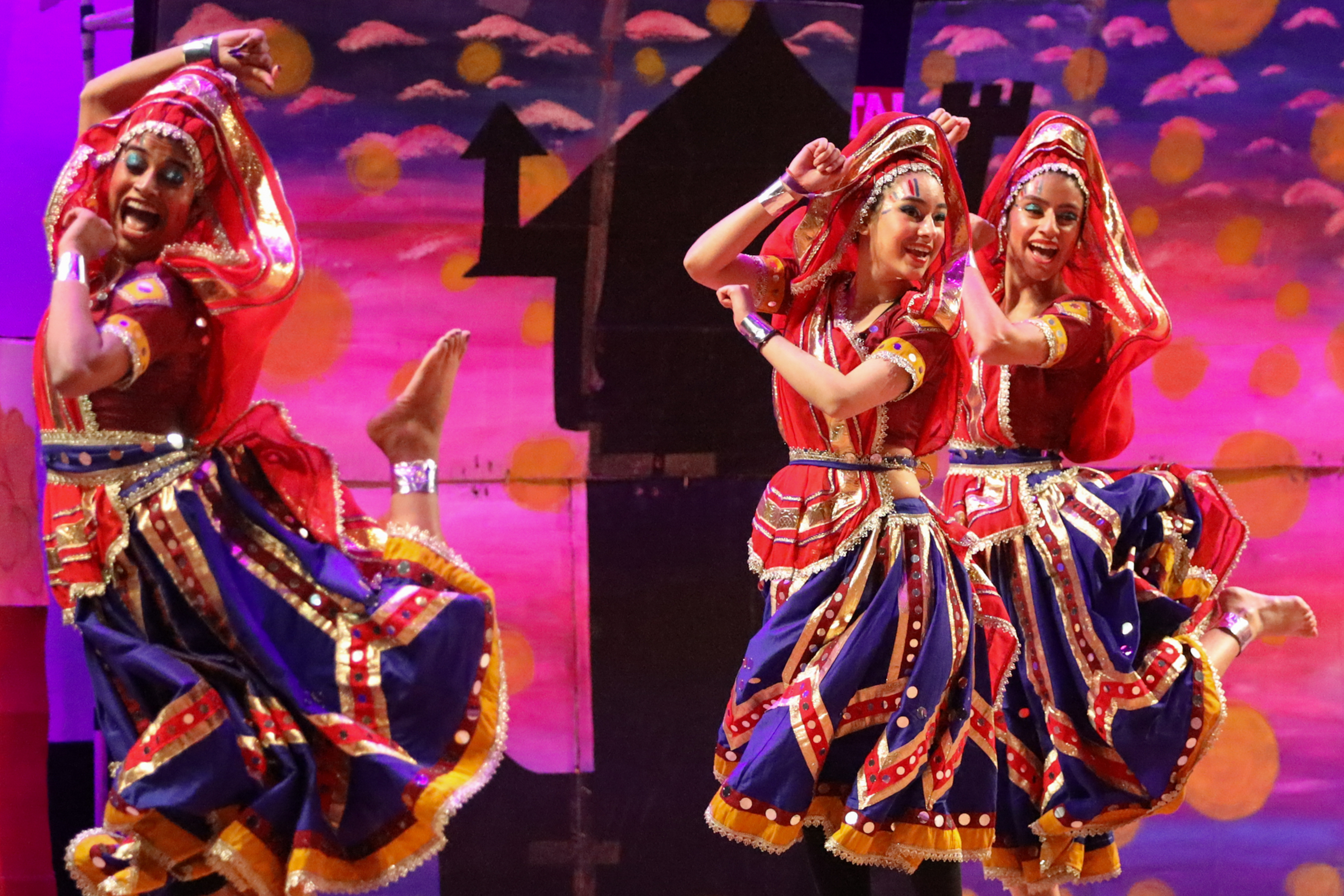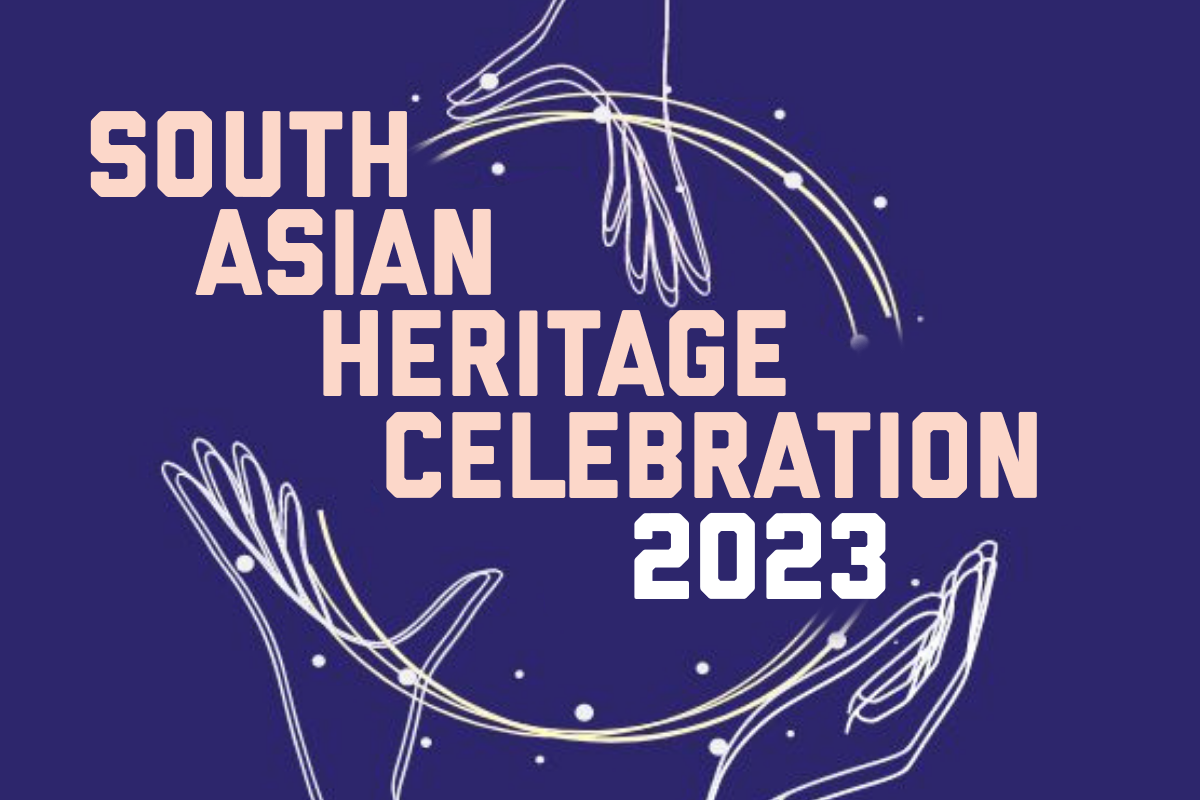March marks the George Washington University’s 11th South Asian Heritage Celebration (SAHC), a unique student-led tribute to and exploration of the region’s diasporic culture. The 2024 SAHC kicks off tonight, March 1, with a mock shaadi—a staging of a traditional South Asian wedding celebration, including food, music, multiple dance performances and even a bride and groom (who, fortunately, will leave the party with no legal obligations).
This year’s SAHC theme, “Once Upon a Time: Weaving the Threads of Tradition, Diversity and Resilience through the Art of Storytelling,” investigates the way narrative shapes the collective history of the South Asian diaspora—the diverse perspectives of the community, the way those stories resonate across borders and the possibilities that shared storytelling creates.
“Shared stories and oral histories are very large in our community because they're a way of not only preserving history, but keeping our cultural heritage and shared experiences alive and uniting us across generations,” said Nafia Lalani, outreach/SAHC co-chair of the GW South Asian Society (GW SAS).
GW Today spoke to Lalani, Saher Mir of GW’s Pakistani Students Organization (PSA) and Aditi Venkateswaran of the GW Indian Students Association (ISA), all sophomores and SAHC co-chairs of their respective organizations, about what SAHC means to them and what they’re looking forward to this month.
"We’re so lucky to be one of the only schools that has a South Asian Heritage Celebration month. It’s such a flex."
Q: Talk a little about the theme: How does storytelling relate to your own sense of South Asian heritage?
Saher Mir: Storytelling ties into a big theme with SAHC, which is unity. The three of us are a good example: Nafia is Indian and Pakistani, Aditi is Indian and I’m Kashmiri, which is kind of the bridge between those countries and a major conflict region with a lot of violence in its politics. But one thing that all three of us can relate to is the history of partition and the trauma our families, including our living grandparents, have gone through because of colonization. And we learn about that through the stories they tell.
Nafia Lalani: In my case, storytelling is what connects me to my grandpa, who is probably the person I’m closest to. Luckily, I can speak his language, and I remember going to his room every night and picking his brain about all his different experiences. He’s not very philosophical—he can’t always communicate about modern-day ideas—but our form of communication was him sharing stories and memories of his own, maybe inspiring me to draw my own conclusions that were relevant to my day-to-day life.
Men in South Asian cultures aren’t often taught that it’s normal to be emotional and that their feelings and stories can make them stronger. But my grandpa was and is deeply emotional, and I had the privilege of hearing a lot of the stories from his life—whether that was immigrating to the United States, or living after September 11 as an Indian Muslim who had the same identity as a lot of the people who were being racially targeted at that time, and then watching his grandchildren grow up and have very different futures than he did. It brought our whole family together, including my younger cousins: When he was telling a story, it brought all of us together around the table to listen.
Aditi Venkateswaran: A lot of the storytelling in my upbringing came through religion. I am a Hindu, and for us every story about our gods is deeply rooted in the specific values that are important to us. It’s how we pass on these values intergenerationally. I’m also an immigrant myself—I was born in India—and I remember when we had just gotten to America and my brother was born, my mom would be feeding us and telling us stories about Rama or Krishna or some other god, and the way she told these stories would very much impact us.
It also created an interesting interplay, because growing up, there was a strong emphasis placed on unquestioningly following the moral values you’re taught. But American culture also taught us that we should question and decide what’s right and where our own values fit. That’s important to me as well.
Q: What does celebrating South Asian heritage mean to you, and why is it important to do that here at GW?
SM: We’re so lucky to be one of the only schools that has a South Asian Heritage Celebration month. It’s such a flex. I love just saying the words—“I’m South Asian.” It’s inclusive of not just India, Pakistan and Bangladesh but also of Nepal, Sri Lanka, Afghanistan, Bhutan, the Maldives and the Indo-Caribbean diaspora. People think it’s a monolith, but it’s such a diverse area. At the same time, we have so much commonality.
Especially being Kashmiri, from an area where there’s so much conflict—at the end of the day we’re all South Asian. So much of the tension that we have with each other and so much of the violence that’s occurring in regions like Kashmir is because of the history of colonization and division. One thing this month shows is how we can come together and celebrate our differences and learn about each other. Maybe it’s impossible not to have biases; it’s in our nature. But a great thing about living in America and being at GW is that we get to meet each other, talk to each other and unlearn our biases simply by being friends with each other.
AV: Yeah, even within the region—even within India, for instance, there’s many different cultures, groups of people, different religions, and right now those differences are blamed for violence and conflict within the country itself. But when we come out of that region, my mom always says, at the end we’re all South Asian, and we’re all one big community. We have our own set of battles to face as a minority population within the U.S.
Where I grew up, we had a really large Asian population, but unfortunately there was a reluctance to accept the culture and to kind of decolonize our minds. I remember being viewed as “too brown” half the time because I was very openly in love with my culture. But coming to college, I met people like Nafia and Saher who shared my love for being brown and for the South Asian community.
So when we celebrate South Asian heritage month—when we have these back-to-back events from all these different organizations—not only do I learn more about my own culture and appreciate it, but I also learn more about other people in my community. I'm not Muslim, but I love to learn about Pakistani Muslim culture. We all come together and accept ourselves for who we are. I think that's a beautiful part of it.
NL: One thing I love about SAHC is creating a space for South Asian students who haven't necessarily been heavily involved in organizations in terms of membership or leadership positions but can still find a piece of home at these events. For example the mock shaadi—weddings in general in the South Asian community are a huge thing, so that’s something we love that we can all share. Beyond that, I have a lot of friends who are not South Asian who are coming to these events, and seeing them so excited makes me really excited. It’s amazing to share these pieces of myself with my friends from inside and outside the community.
#GWToDo: South Asian Heritage Month
Times and locations will be updated as they become available.
March 1 at 6 p.m. Mock Shaadi: Heer Ranjha
USC Grand Ballroom
800 21st St., NW
March 2 at 3 p.m. ISA Stranger Project
The GW Museum and The Textile Museum
701 21st St., NW
March 22 Khaana Khazana
March 23 at 7 p.m. SAHC Keynote Comedy Show and Q & A
Jack Morton Auditorium
805 21st St., NW
March 24 Muslim Students Association Iftar
March 27 Shayari Diaries
March 30 Holi Celebration
March 31 Campfire
April 13 Bhangra Blowout




